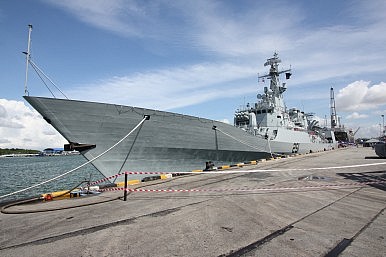by Vibhanshu Shekhar
 Vibhanshu Shekhar, Former Visiting Fellow at the East-West Center in Washington, explains that “These incomplete projects highlight a fundamental difference between the posture and reality and raise questions over India’s ability to deliver results.”
Vibhanshu Shekhar, Former Visiting Fellow at the East-West Center in Washington, explains that “These incomplete projects highlight a fundamental difference between the posture and reality and raise questions over India’s ability to deliver results.”
India-ASEAN relations reached a new level of euphoria during the last week of January, 2018 when leaders from the ASEAN countries marched to New Delhi to commemorate the silver jubilee (25 years) of the India-ASEAN partnership, and witness India’s republic day celebrations on January 26, 2018. For the first time in independent India’s history, New Delhi celebrated its republic day ceremony with the leaders of ten ASEAN states (as opposed to normal tradition of one head of state). India’s Ministry of External Affairs hailed the commemorative summit as “absolutely historic,” “unprecedented,” and filled with an “air of festivity.” Indian Prime Minister Narendra Modi called the commemorative summit “an unprecedented gesture of goodwill from ASEAN nations,” a “historic milestone in a remarkable journey,” and a “deepening partnership of great promise.” The Indian and ASEAN media called the summit “the ASEAN embrace,” “an epic bond,” “the most significant exposition” of India’s ‘Act East’ policy, and India and ASEAN were “lost in each other’s eyes,”. The year of 2017 marked 25 years of India-ASEAN relations, 15 years of summit partnership with ASEAN, and five years of strategic partnership.













/arc-anglerfish-arc2-prod-mco.s3.amazonaws.com/public/JGAJRHYQPNHBZJTBREIT62QACQ.jpg)
/arc-anglerfish-arc2-prod-mco.s3.amazonaws.com/public/IEKFJJJ6RJAXRLYUPJEMCFV6HI.jpg)